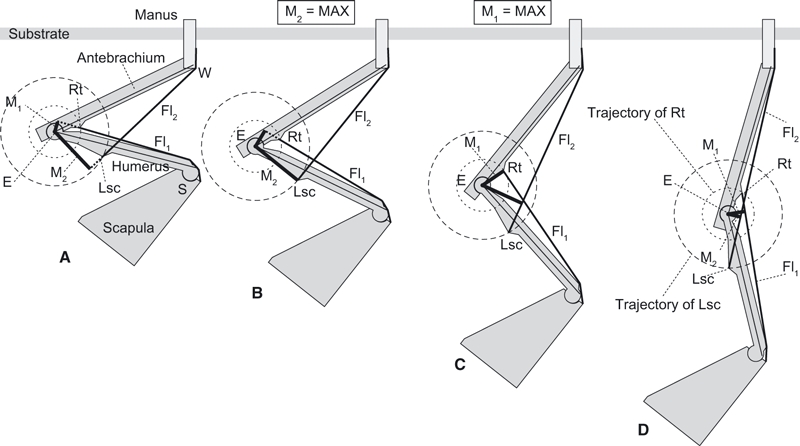Fig. 1.

Model of forelimb mechanics during quadrupedal suspension in various elbow joint angles from (A) flexed to (D) extended. The elbow is subject to an extensor torque induced by body weight and resisted by counteracting muscle forces times moment arms (Mn). M2 and M1 are maximized at the specific elbow joint angle shown in (B) and (C), where the lines E-Lsc and E-Rt are perpendicular to Fl2 and Fl1, respectively. E, centre of elbow joint rotation; Fl1 and Fl2, flexor muscle groups along the brachium and antebrachium, respectively; M1 and M2, moment arms of Fl1 and Fl2, respectively; Lsc, lateral supracondylar crest; Rt, radial tuberosity; S and W, shoulder and wrist joints, respectively.
